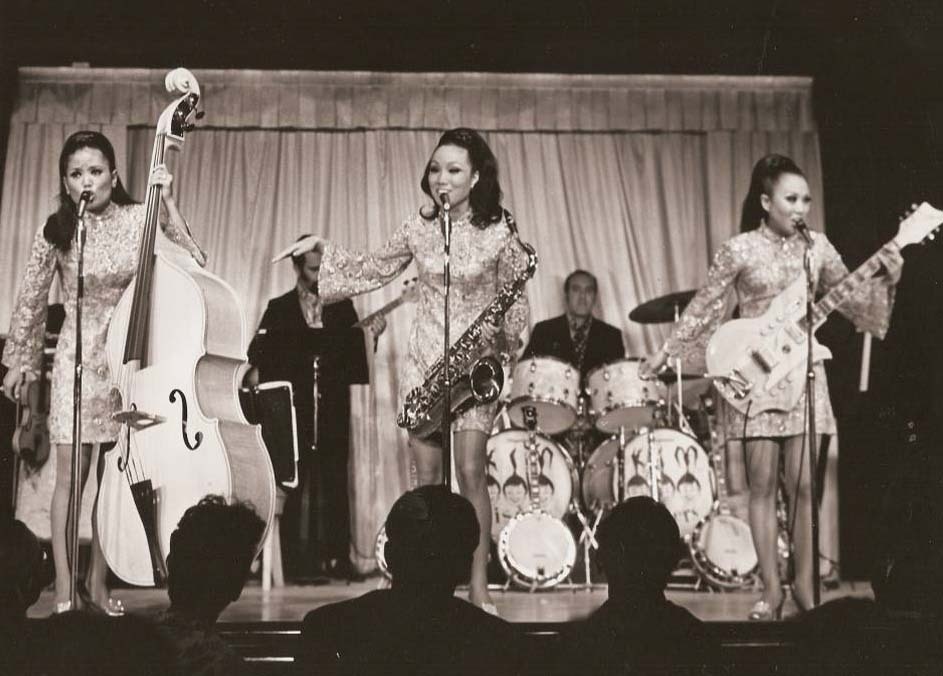The music video for sexy single “You Know” on Jay Park’s 2015 rap album WorldWide, integrates a combination of provocative lyrics, sexy choreography, and foreign locations to tell a “bad boy” narrative. This analysis will discuss how Jay Park attempts to build authenticity through emphasis on male gaze, sexual objectification, and criminality to capitalize on the “bad boy” image associated with hip hop culture.
The lyrics of “You Know” tells a narrative of a man who calls a girl late at night because he desires sex, making it clear that the relationship is no strings attached, asserting the dominant male/submissive female concept of the MV. Through the abundance of half naked women surrounding the rappers in the MV, we can see the voyeuristic treatment of women bodies, common in Western hip-hop music videos. As stated by Cedarbough, the movements of the women “serve the overwhelming focus of promoting the artist (Cedarbough 2016: 258). Therefore, the women are given the same hair style and clothing, stripping them of individuality, focusing on their bodies role of making Jay Park look more “bad-ass”, enhancing the authenticity of the MV.
The reoccurring bad boy aesthetic flowing throughout the video, is also authenticated through sexual objectification of the women in the MV, including objectifying K-pop idol Hyuna. The limited screen time on Hyuna throughout the video is essentially used as a prop. Despite being talented and one of the major “sexy” icons in Korean pop culture, we can see how the MV uses Lin and Rudolf’s concept of “dollification”, defined as “a way the fantasy narrative of women being objectified into petty, sexy-yet-submissive, nonthreatening dolls in K-pop” (Lin and Rudolf 2017: 31), on Hyuna to build on the bad boy dynamic of the MV. The way Hyuna is sitting on the edge of the bed, innocently curled up in a shielding state, while Jay Park sits confidently on the opposite end of the bed, places her in the compliant role. However, as mentioned by Epstein and Joo “exposed legs operate as consumer fetish, encouraging desires to both gaze at and posses the “perfect” body (Epstein and Joo 2012: 8), so not is Hyuna used to portray the female in the lyrical narrative; an object of a sexual fantasy for the male to claim, but also as the ideal woman that men desire.
Since style is an integral factor in contemporary hip-hop culture, Hare and Baker argued that style is used to impose hierarchies by “using commodities to claim the cultural terrain” (Hare and Baker 2017: 2). “You Know” MV incorporates “commodities” such as an entourage of women, well-known underground rappers, gang-affiliated activity, money and expensive jewellery as an important marker of hip hop authenticity” (Ibid: 5). Yet, an interesting point in this video is the use of a foreign space rather than a Korean backdrop. Throughout the video we can see influence more commonly linked with western hip hop culture mentioned earlier. However, in many scenes we see Chinese imagery such the cheongsam (high-neck red dresses), the lanterns, fans, paintings decorated in the room they occupy in many scenes as well as the game of mah-jong the rappers are playing are all cultural aspects that aren’t Korean. Why use other Asian influences in addition to hip hop cultural elements on the MV?
Since cultural hybridization between Western universalism and Asian exoticism is pivotal in attracting transnational audiences, the incorporation of foreign elements decreases “cultural odor” therefore, increasing interest of Korean viewers by presenting them with visuals that are not simply Korean or a copy of Western products. However, the use of a foreign space can be used to not only gather interest among domestic viewers and increase authenticity of the male hip hop bricolage, by stylistic features the “thug life” (i.e gambling, promiscuity, drug deals, etc..), but it can possibly be a way to separate the delinquency of Western hip-hop culture from Korean hip-hop culture.
Cedarbough, Saeji T. “Cosmopolitan Strivings and Racialisation: The Foreign Dancing Body in Korean Popular Music Video.” In Korean Screen Cultures: Interrogating Cinema, TV, Music and Online Games, edited by Andrew David Jackson and Colette Balmain. 257-92. Oxford: Peter Lang Publishers. 2016.
Epstein, Stephen J., and Rachael M. Joo. “Multiple Exposures: Korean Bodies and the Transnational Imagination.” The Asia Pacific Journal 10, no.1 (2012): 1–24.
Hare, Sarah, and Andrea Baker. “Keepin’ It Real: Authenticity, Commercialization, and the Media in Korean Hip Hop.” SAGE Open 7, no.2 (2017): 1-12.
Lin, Xi, and Robert Rudolf “Does K-pop Reinforce Gender Inequalities? Empirical Evidence from a New Data Set.” Asian Women 33, no.4 (2017): 27-54.

 “translatability”, where American entertainment mannerisms were adopted by Korean performers such as ‘stage manner’ and ‘showmanship” (Ibid.). The stage presence of K-Pop idols today, such as the incorporation of complex choreography and charismatic stage presence is an aspect of K-Pop that fueled its global domination.
“translatability”, where American entertainment mannerisms were adopted by Korean performers such as ‘stage manner’ and ‘showmanship” (Ibid.). The stage presence of K-Pop idols today, such as the incorporation of complex choreography and charismatic stage presence is an aspect of K-Pop that fueled its global domination. audience but also to display the exoticism of language for young Korean audiences. There are many rap competitions shows, such as “Highschool Rapper” and “Show Me the Money” that exemplify this incorporation of foreign language into lyrics. By watching the reaction of the other contestants, the rappers who use English in their raps are clearly seen as more impressive lyricists.
audience but also to display the exoticism of language for young Korean audiences. There are many rap competitions shows, such as “Highschool Rapper” and “Show Me the Money” that exemplify this incorporation of foreign language into lyrics. By watching the reaction of the other contestants, the rappers who use English in their raps are clearly seen as more impressive lyricists.